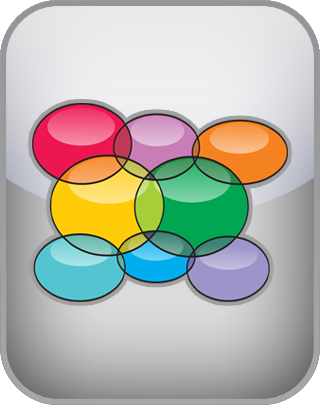Personality Bubbles Test
The Personality Bubbles Test (PBT) is an assessment tool designed to measure individual personality traits based on the work of psychologist Theodore Millon. The test offers a comprehensive approach to understanding the complexities of human behavior and interpersonal dynamics. By evaluating traits such as emotional expression, social interactions, and coping mechanisms, the PBT provides insights that can guide personal growth.
To take the test, enter your input below.
Question 1 of 90
I seldom notice my emotional reactions—perhaps I don’t really have emotions.
NEXT
The Personality Bubbles Test was created by IDRlabs, based on the works of Theodore Millon, Seth Grossman, Aaron T. Beck, Arthur Freeman, and Nancy McWilliams.
The study of personality has evolved significantly over the years, with various models developed to better understand the complexities of human behavior. One such influential figure in the field is Theodore Millon, whose work on personality styles has provided a robust framework for assessing and understanding personality traits. The Personality Bubbles Test (PBT) is a new assessment tool that draws on Millon's theories to measure his 15 personality styles, offering valuable insights into individual differences and the underlying structures of personality.
Theodore Millon identified 15 personality styles categorized into three primary groups: Self-Defeating, Adaptive, and Maladaptive. Each style represents distinct patterns of thinking, feeling, and behaving, reflecting different ways individuals respond to their environment and relationships.
The Structure of the Personality Bubbles Test
The Personality Bubbles Test is designed to assess these 15 styles through a series of statements and questions that encourage self-reflection. Participants respond to items on a Likert scale, indicating their level of agreement or frequency of certain thoughts and behaviors. This scoring system allows for nuanced insights into each participant's personality profile.
The PBT incorporates both self-report measures and observer ratings, providing a comprehensive understanding of how individuals perceive themselves and how they are viewed by others. This dual approach enhances the reliability and validity of the assessment, as it captures the complexity of personality from multiple perspectives.
Applications of the Personality Bubbles Test
The PBT has a wide range of applications in clinical, organizational, and educational settings. In clinical psychology, it can assist mental health professionals in diagnosing personality disorders and tailoring treatment plans to individual needs. In organizational contexts, it can help identify employees' strengths and weaknesses, improving team dynamics and enhancing workplace performance.
Moreover, in educational settings, the PBT can be a valuable tool for educators and counselors in understanding students’ personalities, fostering better communication and relationships, and promoting personal growth.
The Personality Bubbles Test represents a significant advancement in the assessment of personality, drawing on Theodore Millon’s rich theoretical framework. By measuring the 15 personality styles, the PBT provides valuable insights into individual differences, promoting a deeper understanding of personality and its implications for behavior and well-being. As we continue to explore the complexities of personality, tools like the PBT will play a crucial role in bridging theory and practice, enhancing our ability to support individuals in their personal and professional lives.
Prior to using our free online test, please note that the results are provided "as-is", for free, and should not be construed as providing professional or certified advice of any kind. For more on our online quiz, please consult our Terms of Service.

